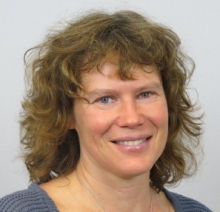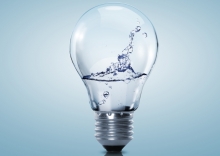- Research
Issue:
Two European research projects have helped deliver progress towards the commercial use of bioelectrochemical systems in water-related applications.
Electrochemical systems involve chemical reactions taking place at electrodes. In bioelectrochemical systems, the reactions involve microbial activity. The two projects have been looking at use of bioelectrochemical systems to process urine and wastewater containing metals.
The project that has been focused on metals, BioElectroMET, ended in March. The other, Value From Urine, ends in a few months’ time. Both have been supported by the EU’s 7th Framework Programme, and a joint workshop was held in March.
Dr Martijn Bijmans, of Dutch research organisation Wetsus, is coordinator of both projects. ‘Both of the European projects are focused on the upscaling of bioelectrochemical systems, and I think we went to pretty much the largest scales which are being tested around Europe,’ he says.
The workshop attracted around 80 attendees, including representatives of most of the key players in the field, and provided an opportunity to review progress and to share views on the future, says Bijmans.
Value From Urine is focused on the recovery of ammonia from urine, and the conversion of organic matter into electrical energy for use in the process, explains Bijmans. BioElectroMET has been focused on the recovery of metals, especially copper from waste streams, using the wastewater as an inorganic energy source for bacteria.
Time for upscaling
Modern interest in bioelectrochemical systems has seen research take place over the last 15 years or so. ‘In the last couple of years, upscaling has been a real issue, to try to get some of the most promising applications to market,’ says Bijmans.
‘For these kinds of systems, in the end it is most likely that units will be upscaled in a way that you have a unit of, for instance, one square metre in size, and then make more of these units and connect them,’ he explains. In this sense, the technology has now reached commercial scale, in that individual units are of a size that could realistically be replicated in this type of arrangement.
More work is needed, particularly to demonstrate that issues with upscaling can be overcome and that systems are commercially viable. ‘I think long term efficiency is something that has to be proven and shown,’ comments Bijmans. Ongoing work on the design of units also brings new issues, such as how the materials selected perform, and the effects of mixing.
But there are already patents for some of the systems, and Bijmans is optimistic about the prospects for scaling up the technology. ‘Some of these systems are now getting into the pre-commercial fields. They have, you could say, survived the first real field tests at scale, they need to become better performing and cheaper, but not by an unimaginable amount,’ he says.
Challenges beyond the successful projects
‘I think both of the projects have been a success,’ comments Bijmans. ‘I think Value From Urine has shown there is a very good business case,’ he says. This gives a positive basis for future work, and the focus now should be to work in particular on stability on material costs, he adds.
‘For BioElectroMET, I think we reached a really a good operating system,’ says Bijmans, adding: ‘The business case there is a little bit more difficult.’ For this application in particular there is the challenge of competition with other technologies. The key issue is to find a good fit with the waste stream, and Bijmans comments that niche applications could provide an opportunity to build wider interest.
The workshop provided an important opportunity for exchanges between the two projects as they draw to a close. Final reports will be produced, and there will be discussions about future work. But Bijmans notes that the advances with the projects reflect wider progress in the use of bioelectrochemical systems that indicates their time as viable technologies may be coming. ‘You can see the upscaling – it is really getting closer to a concrete business case,’ says Bijmans. ‘The next phase, to get closer to commercial success, needs to focus on good design, good application and control reliability, and trying to get these systems into the market.’
For more information, see:
Keywords:
- Europe, wastewater






